I have been a “wanna-be” RC’er for more than 40 years. I have dabbled in it on and off, and even earned my solo wings at my local flying field. My problem has always been confidence: takeoffs and landing for me were always white-knuckle experiences. In fact, some of my takeoffs were so full of excitement, I would get cheers from the other fliers when I got airborne. Over time, my flying did not improve much.
The members in my club were helpful, but I was always confused by the wide-range of advice I would get about the same topic. “You need more rudder in that turn.” “Take the rudder outta’ that turn and you’re better off.” “You need more speed when you land.” “Fly it all the way to the runway.” Everyone seems to have their own favorite way of flying that works for them. The conflicting advice really confused me.
As with all things in life, when you want to learn how to do something the right way, seek out the people that do it better than anyone else, and spend time with them. Author and radio show host Ken Coleman calls this the “Proximity Principal.” So I did. I completed a week of basic RC flight training at Dave Scott’s 1st U.S. R/C Flight School in Shawano, Wisconsin. Dave is a regular contributor to this magazine and a legend in both RC flying and full-scale aerobatic competitions. He has trained more than 2,000 people at his flight school. He is also the nicest guy you will ever meet.
As a novice pilot, I have no business telling you experienced pilots how to fly. This is not my intent here. Nor is my intent to focus on Dave and his flight school. It is about the things I learned at the training that has given me a second life in RC flying.
Many of you who know Dave are familiar with his huge vocabulary of one-line quips. I devoured a week’s worth of them, dutifully jotting them down so I would not forget them. I have combined Dave’s top 10 one-liners into a lesson plan that has completely changed the way I fly RC airplanes.
Your airplane is the best trainer you will ever meet.
This sound silly, but it is the ground truth for better flying. One of my favorite sayings is,
“Never say anything unless you have more to contribute than the silence.” Many of your club gurus should heed this advice.
When was the last time you took any advice from your airplane? If your plane could talk, what would it say to you? Especially when it is flying? Listen carefully and your airplane will tell you exactly what you need to do to fly better.
Let it fly!
What the heck does this mean? Exactly what it says: Let IT fly. If you have a properly trimmed airplane, it will fly straight and level all by itself. It wants to fly. Remember, it is the airplane that is flying, not you.
As the pilot of the airplane, you should apply the minimum amount of flight-control movement to change its direction, height, or speed. Nothing more, nothing less. This is the holy grail of good flying.
Two fingers on the sticks.
Before attending flight school, I used a transmitter neck strap and flew with my thumbs on the top of the transmitter sticks. Not anymore. Dave implored me to reconsider my approach to flying. The problem with a neck strap is it keeps the transmitter too high and too close to the body. This causes your elbows to bend at an uncomfortable 45-degree angle. Even more important, flying “thumbs only” doesn’t allow you enough fine control over stick movement. Placing your index finders on the back of each stick up against the bottom of the thumb while wrapping your other three fingers around the transmitter is the key. This felt unnatural at first, but in a short time I was hooked.
When in doubt, under control.
Modern trainers equipped with flight stabilization are designed to right themselves when you neutralize the sticks. In other words, “get out of the controls when in trouble.” This is amazing technology and has changed the way we teach newcomers to the sport. You should apply this same principal to your every flight. You will be a better pilot if you stop messing with the sticks. As an example, I just spent a week flying airplanes and did not use the rudder stick except to adjust the throttle setting. Granted, I flew a large trainer with aileron/rudder mix. But I learned how to take off, fly a pattern, and land without using a control many of you believe you could not fly without. And I did this in 40 mph winds! As for the “sticks,” less is more. Let IT fly.
Keep your turns level.
When I asked Dave, “If you could give me only a single one-liner of advice for the whole week, what would it be?” Without hesitation he said, “Keep your turns level.” This is such a fundamental element of success, we practiced it over and over and over. The technique is simple: 1. Bump the aileron stick in the direction of the turn. 2. Aileron stick to neutral. 3. Pull up-elevator just enough to complete the turn without gaining or losing altitude.
“Bump – Neutral – Pull.” To make a left turn, the direction of the stick will move to the 9 o’clock position for a brief moment, return to the center position to neutralize the aileron, and pull (back) up-elevator (6 o’clock) just enough to keep the plane from losing altitude. That’s it. Using this technique, notice the stick was either at 9 o’clock, neutral, or 6 o’clock and nowhere else. If the plane does not turn sharply enough, you can “bump-to-9” again, but get back to neutral immediately.
If you are a pilot who holds your aileron stick somewhere between 6’ and 9’ o-clock during a left turn, you are probably working way too hard to keep your turns level, if you do so at all. In short – level turns are the key to mastering R/C flying. During your turns, keep the ailerons out of the equation. Practice “Bump – Neutral – Pull.” It will change the way you fly.
You can’t fix a fiddler.
Pilots at your field who control their aircraft smoothly, calmly, and precisely are not fiddlers. They understand less is more. A fiddler is a pilot who is constantly moving the sticks to fly the airplane. A fiddlers’ fingers seem to be in perpetual motion. Many pilots fly this way. It is very hard to convince these pilots they are “over controlling” their airplane. They are programmed to fly this way. A fiddler has to learn how to change this habit themselves. They must convince themselves there is a better way.
Here is a quote from Dave during one of our ground school lessons: “Many RC pilots use more control inputs on the downwind, base, and final approach than I do for a full aerobatic routine.” Think about this for a second and what it means if you are a fiddler. If your airplane could talk, it would say to you, “Let ME fly.”
If you don’t like what the airplane is doing, stop doing it!
This one is my favorite and does not need much explanation. Whatever your airplane is doing, you are doing it to it. This, of course, only applies to a properly tuned airplane. If you are always complaining about the way your airplanes perform, go back and re-read item no. 1.
Get help if you have P.O.W.T symptoms.
Some pilots suffer from “PreOoccupation With the Throttle.” This syndrome prevents them from having full mastery of the machine, because they adjust the way the airplane flies by the speed of the propeller or turbine.
The real use of the throttle is to control the rate of ascent or descent of the aircraft. It should not be a crutch that inhibits you from “letting IT fly.” During the training, there was zero focus on throttle during the course of a flight. Full throttle on takeoff, low throttle on landing.
Takeoffs can lie, landings cannot.
As with most pilots, I pretty quickly figured out how to takeoff, but landing is in a whole other league. What this quip means is simple: you can make a pretty funky takeoff look good, but this is not true on a landing. Landings always exhibit the truth of the technique. You should identify the landmarks you are going to use to spot where to turn to base and final. Do not just follow what everyone else does. Safely walk out to the centerline of your runway and identify your marks before your flight.
That is why it is so important to plan every flight. The quality of your landing is directly proportional to the amount of planning you put into it.
A series of events causes crashes.
Anyone who studies full-scale aircraft crashes knows in almost all cases, there was a series of events that led to the crash. And if any one of the contributing factors did not occur, the crash probably would not have happened.
This accordion effect is just as true in RC flying. Most pilots will attribute a crash to a single cause, usually mechanical or weather-related. If you do lose an airplane to a crash, take the time to learn and understand the multiple series of events that contributed to the failure(s). Ask any witnesses what they saw. Be humble, be honest, and learn from your mistakes.
MY TAKEAWAY
So you may ask, does Dave’s advice really work? It sure does. By the end of the week, I was proficient at takeoffs, flying any pattern required, and landing. During two of the five days, the wind speed on the ground was a consistent 25 mph. At 200 feet, the winds gusted to 40 mph. This was a crosswind to the runway. We flew in these conditions, all day, and did not crash or damage any aircraft. I have full confidence in my ability to fly and am anxious to put this new knowledge to use.
By Michael G. Spohn
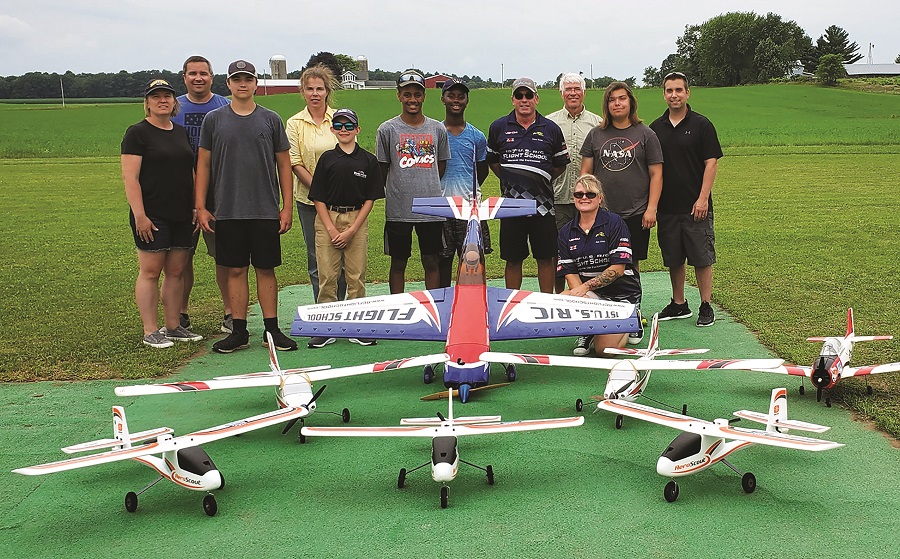
A typical class at Dave Scott’s in-person 1st U.S. R/C Flight School.
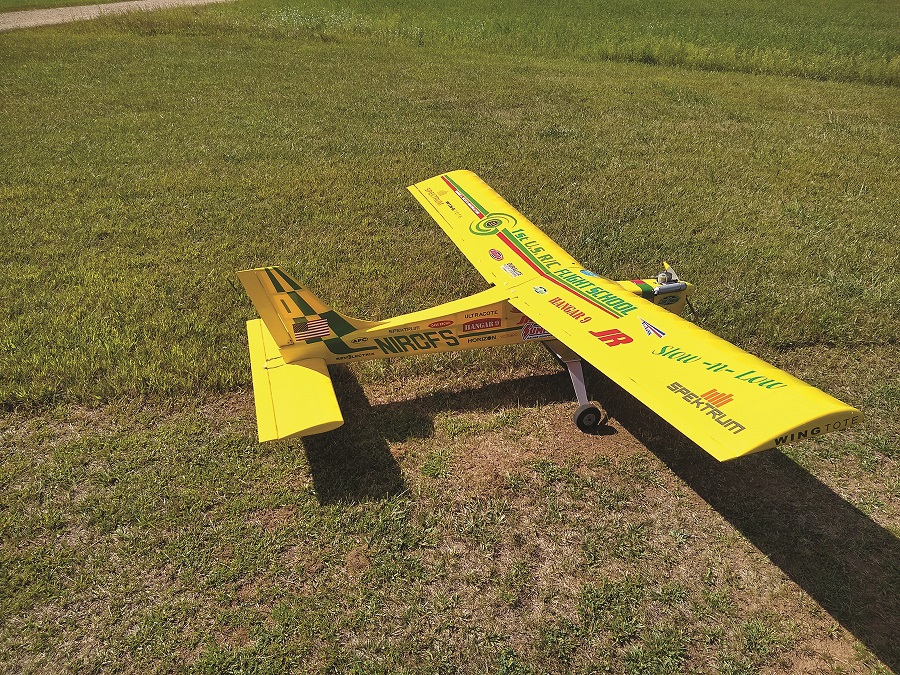
One of the many 1st U.S. R/C Flight School trainers.
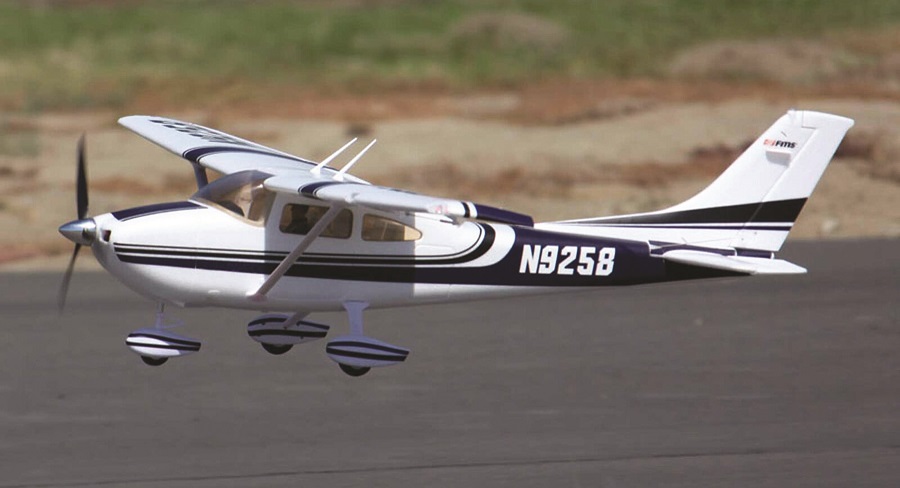
A high-wing airplane with a flight stabilization system, like this FMS Sky Trainer 182 PNP with Reflex, is an ideal intermediate trainer.



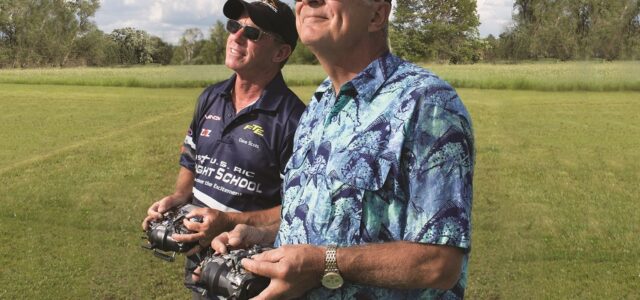





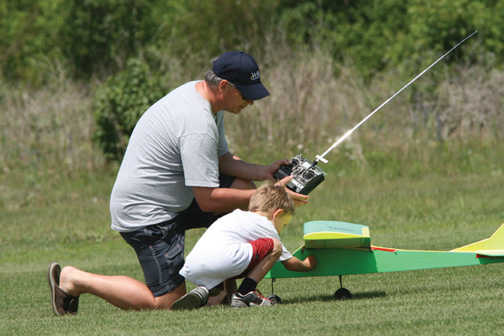
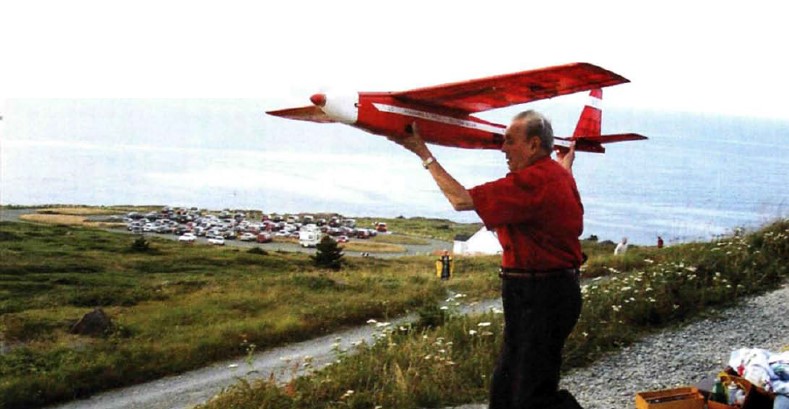
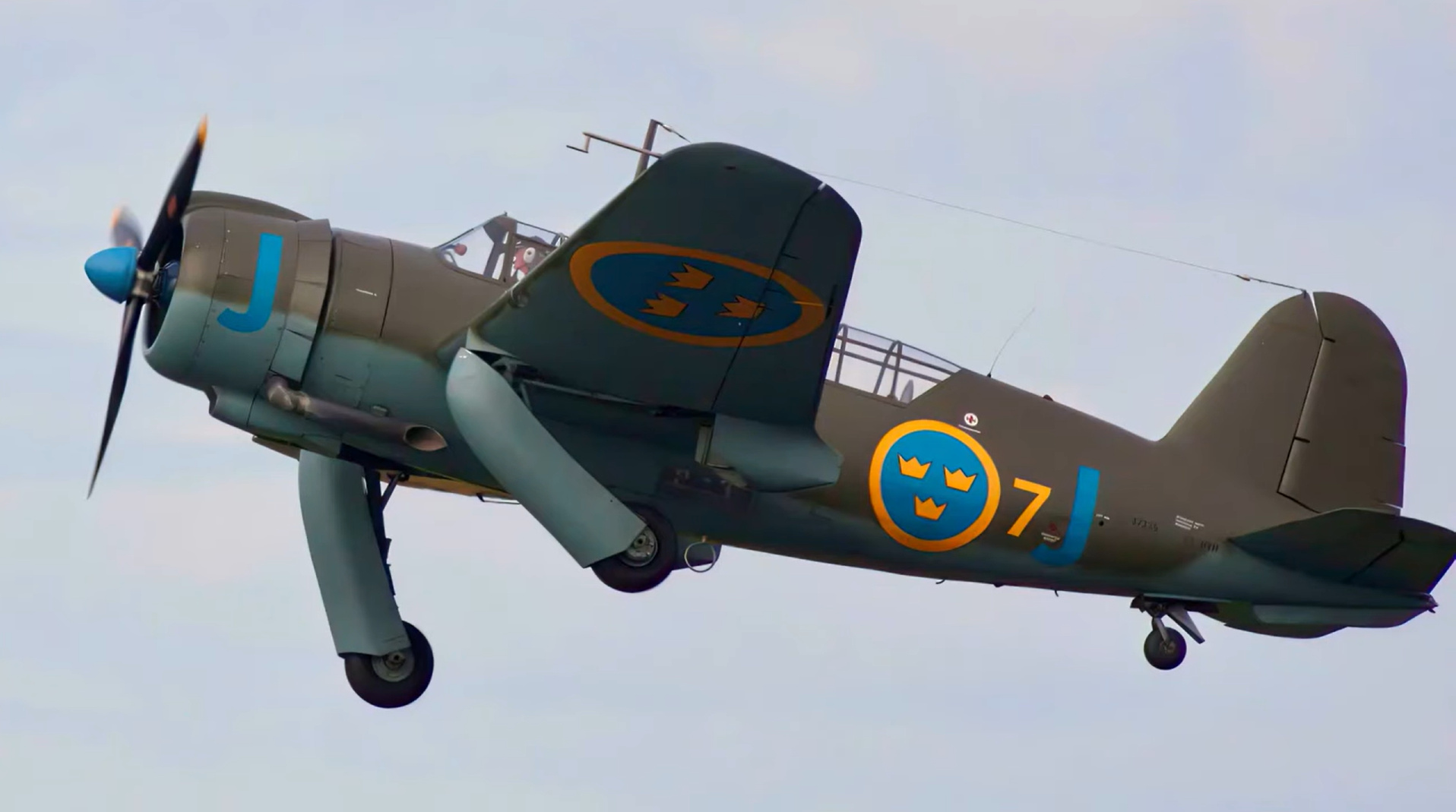
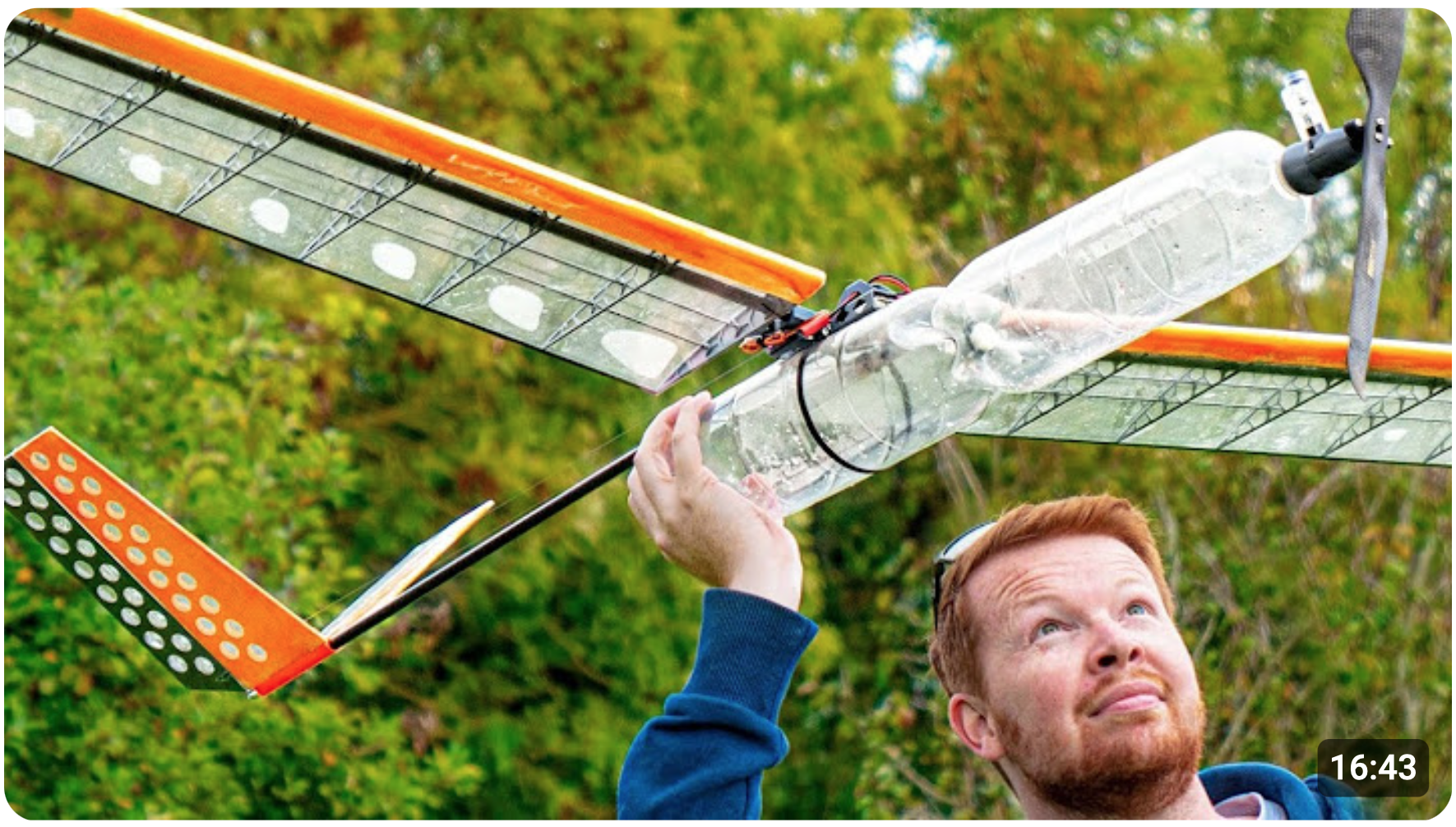












I have been to Daves flight school twice and both times it was a great experience. I am signed up for another session next spring and perhaps more. I learn more each time about flying different RC planes and also stuff you don’t expect to hear regarding other aspects of RC flight. Dave is knowledgeable, personable besides having experience in full as well as small scale as an acrobatic performer. I can compare his teaching and training with other “trainers” but there is no comparison. My other “trainers” would rather fly than train and they would have you fly endless circles around the area complaining about why you were not getting there, but Dave to my knowledge never said any thing but optimism to anyone, and as you are there with two or three others you learn a lot by watching the others also. I also suggest you buy the basic three books that he sells so when you get there you know what he is going to teach.